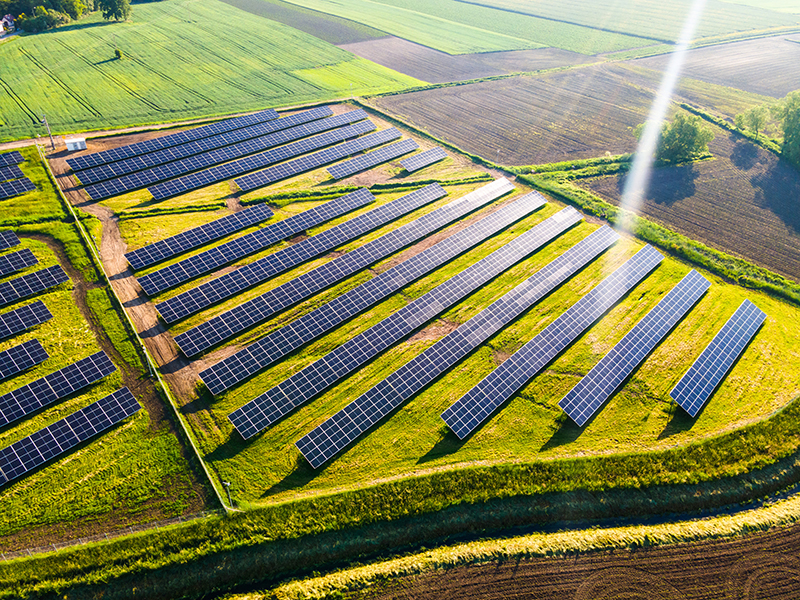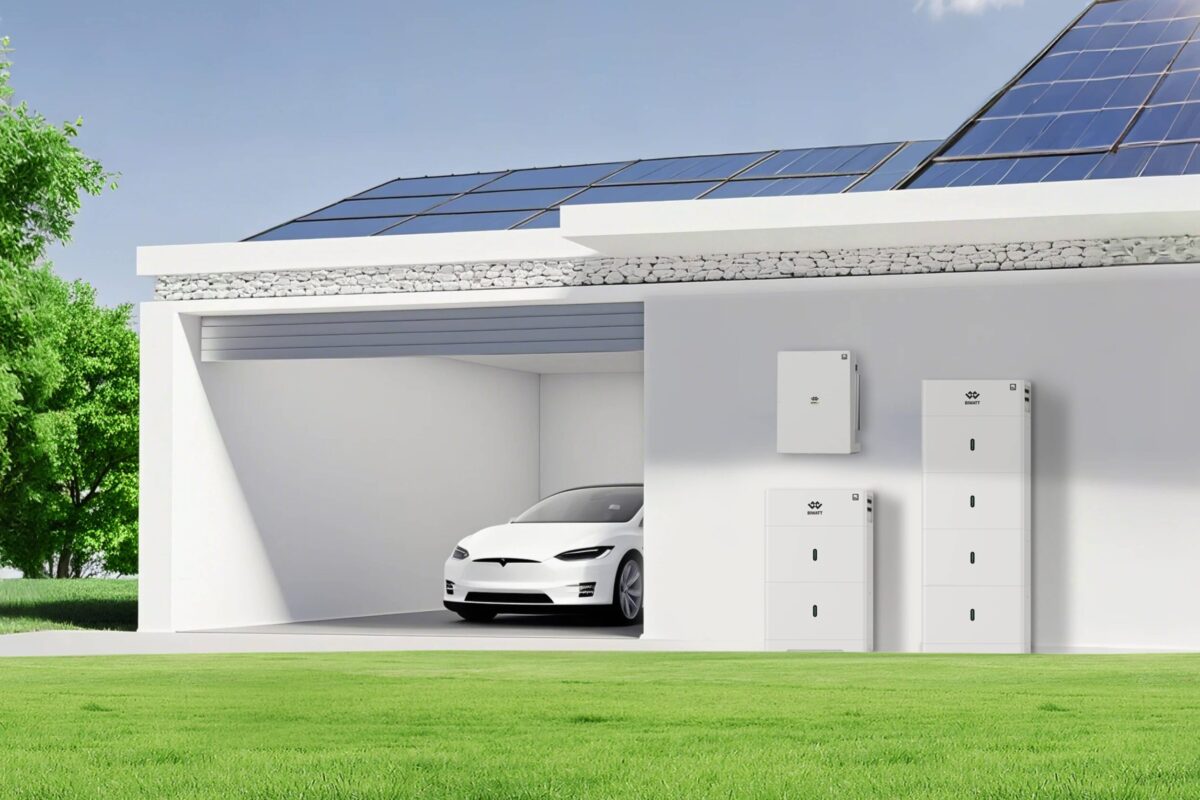With the country having had three prime ministers in three months last year, it should perhaps come as little surprise to discover the last big environmental policy package – the Ten Point Plan for a Green Industrial Revolution – dates back to Boris Johnson.
That policy announcement, from November 2020, included pledges to back “greener buildings” and to “accelerate the shift to zero-emission vehicles” and “drive the growth of low-carbon hydrogen” – our italics.
References to solar power were conspicuous by their absence so how do things stand for UK photovoltaics?
Solar farm planning
The planning for solar farms in the UK is handled at two distinct levels.
Any inland development that will have a generation capacity of more that 50 MW – and double that for anything on water – will be classed a nationally significant infrastructure project, for which a development consent order must be sought from the secretary of state for energy.
For smaller solar sites, the planning process will be handled by the local planning office. Obviously, when dealing with planning at a local level, residents will be allowed a say and they are none too keen on having panels in the fields around their homes. That’s not conjecture, it is borne out by the fact 27 solar farm planning applications were rejected in England, Scotland, and Wales between 2021 and 2022.
Some 19 of those rejections came in Conservative Party-controlled local authority areas. Labour areas rejected four solar applications, Scottish National Party regions three, and Liberal Democrat councils one.
Former PM Liz Truss was said to be preparing a crackdown on solar farms during her premiership but as her term in office wasn’t long enough to fill out a planning form, nothing came of that.
Solar initiatives
The solar feed-in tariff (FIT) was launched in 2010 and incentivized customers to have renewable energy generation systems fitted in their homes with the option of selling power back into the grid.
While the generosity of FIT payments may sound like a great idea, it nearly killed the UK solar industry before it got started. The initial price companies had to pay for a kilowatt-hour of electricity via the scheme was as much as £0.50 ($0.62) – which is almost £0.20 more than customers are paying for grid electricity right now, during a cost-of-living crisis exacerbated by raised energy costs. The FIT scheme simply wasn’t sustainable.
Those high payments also led to cowboy solar companies popping up and selling unsuspecting customers below-par equipment with the promise of earning thousands of pounds per month.
The FIT rates were eventually scrapped in 2019 but some households signed up for 20-year deals and are still getting paid.
Smart Energy Guarantees (SEGs) were the next big idea.
Under the SEG scheme, energy companies are legally obliged to offer customers a price for any excess energy they wish to sell into the grid – but the companies are the ones that set the price. Consequently, some energy providers offer a derisory amount for that power, some as low as £0.01p/kWh.
The SEG scheme is starting to gain support from green energy providers such as Octopus, but even then, the renewables utility only pays £0.15/kWh while charging £0.34 – so customers are better off storing their excess energy rather than selling it.
The only other initiative the UK government is currently running is the ECO4 program. The fourth iteration of the policy, ECO4 offers grants to residents in receipt of benefit payments – and potentially to others under the local authority-administered LA Flex part of the scheme – to help them install or improve everything from home insulation to solar panels.
While admirable in its aim, the program’s extent is limited and the ECO4 comes across as a somewhat toothless policy which does no more than pay lip service to a properly-funded, wide-ranging green homes drive.
Green or greenwashing?
When David Cameron, in 2013, pledged his Conservative government would cut the “green crap” from energy bills, the messaging looked bleak for UK renewables and Ed Matthews, director of campaigns at climate thinktank E3G, said, “the decision to cut energy efficiency funding in 2013 was the single most damaging energy policy decision that any government has taken in UK history.” Matthews described the move as a “staggering failure of leadership.”
That policy decision appears to have set the tone for the last decade – despite numerous green promises and policies.
Covid, Brexit, Ukraine, and Truss-onomics have all taken their toll on the UK economy and, when that happens, the first thing to be jettisoned by short-sighted policy makers is invariably ecologically-beneficial investment.
The future looks a bit shaky too.
Rather than investing in solar, the government is backing nuclear, opening a new coal mine, and even threatened to lift a ban on fracking during Truss’ cameo at Number Ten.
On the opposition benches, Labour has promised to ban fracking, pledged to build “enough solar panels to cover 22,000 football pitches” – that’s 2.4 million at the last count – and introduce a windfall tax on energy companies. That’s easy to say when you’re in opposition, however, so we’ll have to wait and see.
The Lib Dems and the Greens are much more focused on the planet, with the Liberals promising to make the UK the global tidal power leader and to generate 80% of the UK’s electricity from renewables this decade.
The Green Party wants to invest in enough wind power to make it account for 70% of UK electricity by 2030 – with solar, geothermal, tidal, hydro, and other renewables providing the rest. It also wants to ban new nuclear power stations and fracking for gas and oil as well as halting fossil fuel industry tax breaks and subsidies.
The Lib Dems and the Greens, though, are a long way from getting enough votes to put their plans into action on the national stage so it is to be hoped their representatives can start a green revolution from local level.
One thing is for sure: we can’t carry on as we are and the politicians really need to start taking the environment seriously.

Image: Solar Fast
About the author: Robert Cathcart is a Yorkshire-based renewable energy researcher, copywriter and blogger for English PV installer Solar Fast. With more than 20 years' experience in copywriting, he has turned his attention to ecological issues and the green revolution. Specializing in solar power, he aims to inform, educate, and inspire.
The views and opinions expressed in this article are the author’s own, and do not necessarily reflect those held by pv magazine.
This content is protected by copyright and may not be reused. If you want to cooperate with us and would like to reuse some of our content, please contact: editors@pv-magazine.com.



3 comments
By submitting this form you agree to pv magazine using your data for the purposes of publishing your comment.
Your personal data will only be disclosed or otherwise transmitted to third parties for the purposes of spam filtering or if this is necessary for technical maintenance of the website. Any other transfer to third parties will not take place unless this is justified on the basis of applicable data protection regulations or if pv magazine is legally obliged to do so.
You may revoke this consent at any time with effect for the future, in which case your personal data will be deleted immediately. Otherwise, your data will be deleted if pv magazine has processed your request or the purpose of data storage is fulfilled.
Further information on data privacy can be found in our Data Protection Policy.